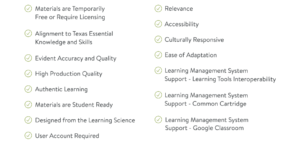Do We Need Textbooks?
Blair Levin is a senior fellow at the Aspen Institute. J. Erik Garr is a partner at Diamond Management & Technology Consultants. Both recently left the Federal Communications Commission after leading the development of the National Broadband Plan for nearly a year.
The Texas State Board of Education voted in May to adopt a controversial set of guidelines for social studies and history textbooks. Countless hours of debate and indignation — and countless words in newspapers and on blogs — were dedicated to such questions as whether Texas schools should teach about the Contract With America and John Calvin.
These issues are important to get right. But the debate misses a more important question: Why are we still using ink-on-paper textbooks, when digital technology offers a much better way?
Today, Johnny opens his math textbook and reads a chapter. He understands parts of it, but not all. He does the 10-question homework on paper and hands it in. Later, he gets the homework back and sees that he answered seven questions correctly.
Envision this: Johnny pulls up a math chapter on his e-reader. When he doesn’t understand something, he clicks a link and watches a video of a great teacher presenting the concept, perhaps using a cool simulation. If Johnny still doesn’t understand, he can chat online with a tutor familiar with the material. When Johnny does his homework on his e-reader, he immediately learns what he got wrong and sees an explanation based on his particular mistake. Johnny’s parents receive a text or e-mail saying that he finished his math homework. The teacher receives a report that evening outlining what the class found straightforward and which problems puzzled students, along with suggestions on how to address the inadequacies. The school board receives data that lead to constant improvement in the effectiveness of course material.
Replacing textbooks with e-readers would create a platform that lets students learn as much as they can, as fast as they can. The teacher is freed from drudgery, such as correcting homework, and given the tools to teach more effectively. Parents and school officials get data that help them guide the educational experience.
And those improvements are just the beginning. Because the learning happens on a digital platform, everything about the experience can be captured. Teaching can be constantly analyzed and improved.
Equipment such as the iPad and technological developments such as 4G wireless and massive computing power mean that the technology needed for such a platform is available today, at costs cheaper than providing material that Gutenberg could have produced.
For the sake of our children, and for the competitiveness of the nation, America ought to be aggressively developing a new category of educational content, delivered using high-speed Internet access.
Unfortunately, America is not grasping the opportunity that broadband presents. As the leaders of the team that prepared the National Broadband Plan that was presented to Congress in March, we have seen that the public debate on broadband focuses too much on how our networks compare with those in other countries. Instead, the discussion should focus on how to use those networks here in America and rethink how we deliver key services.
And it’s not just education. Broadband networks can create ecosystems for health care, such as through remote, in-home monitoring, that can improve patient well-being while lowering costs. In public safety, emergency alerts delivered through mobile devices can be far more targeted and effective than many current practices are in providing critical information in a disaster.
The barriers to shifting the delivery of services to modern technology are many. Outmoded licensing and reimbursement rules create significant disincentives. Incumbent providers often throw up obstacles to new methods.
But perhaps the biggest barrier is the difficulty in shifting to a new type of thinking. In the 1997 business classic “The Innovator’s Dilemma,” Harvard Business School professor Clayton Christensen showed that successful companies are usually late to employ more efficient, radically different approaches to meet their clients’ needs.
Still, however hard the problem of innovation, we must solve it — or U.S. leadership in the world will be threatened. America invented the Internet and is the leader in developing the applications the world uses to search, to connect to friends, to shop and to do many other things. Our country should also be the leader in using broadband to reinvent how we deliver education, health care, public safety and other government services.
Instead, we appear to be suffering from an innovator’s dilemma: spending all our time debating what to put in the history books, without rewriting history by questioning the need for the book in the first place.







0 Comments
Leave a Comment
Your email address will not be published. All fields are required.